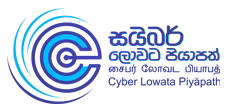The School-Level Purchasing Committee (SLPC) is responsible for managing and overseeing the procurement of goods, services, and resources necessary for the effective operation of the school. Their primary function is to ensure that all purchases are made efficiently, transparently, and in compliance with relevant regulations. Here are the key functions and responsibilities of a School-Level Purchasing Committee:
-
Budget Planning: Collaborate with school administrators to develop an annual budget that outlines the school's financial needs, including expenditures for educational resources, equipment, supplies, and services.
-
Needs Assessment: Assess the specific needs of the school community, including students, teachers, and administrative staff, to determine the items and services required for effective teaching and learning.
-
Vendor Selection: Identify and evaluate potential vendors or suppliers through a competitive bidding process or by soliciting quotations and proposals. Select vendors based on criteria such as quality, cost, reliability, and compliance with procurement policies.
-
Procurement Process: Develop and implement procurement procedures and guidelines to ensure transparency and compliance with legal and financial regulations. This may include setting thresholds for different types of purchases.
-
Request for Proposals (RFPs) and Quotations: Draft RFPs and RFQs for complex or high-value purchases to solicit detailed proposals and quotes from vendors. Evaluate responses to select the most suitable provider.
-
Cost Analysis: Analyze the cost-effectiveness of proposed purchases and compare prices from different vendors to make informed decisions that maximize the value of school funds.
-
Contract Negotiation: Negotiate terms, conditions, and pricing with vendors, ensuring that contracts are favorable to the school and that all relevant legal requirements are met.
-
Documentation and Records: Maintain detailed records of all procurement activities, including vendor communications, quotes, purchase orders, contracts, and invoices.
-
Quality Assurance: Ensure that purchased goods and services meet established quality standards and specifications. Conduct inspections and quality checks as needed.
-
Compliance: Ensure that all procurement activities adhere to local, state, and federal laws and regulations governing public school purchasing, including ethical and legal standards.
-
Ethical Considerations: Uphold ethical standards in the procurement process, including avoiding conflicts of interest, favoritism, or unethical practices.
-
Inventory Management: Oversee the management of inventory, including tracking, restocking, and disposing of surplus or obsolete items.
-
Vendor Performance Evaluation: Continuously assess the performance of vendors and suppliers to ensure they meet contractual obligations and provide high-quality products or services.
-
Cost Control: Monitor expenditures and seek opportunities for cost savings, negotiation, and efficiency improvements in the procurement process.
-
Feedback and Communication: Maintain open communication with school administrators, teachers, and staff to understand their procurement needs and ensure their input is considered in purchasing decisions.
-
Reporting: Provide regular reports to school leadership and stakeholders on procurement activities, expenditures, and compliance with procurement policies.
-
Long-Term Planning: Anticipate future procurement needs and trends, especially as they relate to changes in curriculum, technology, and educational requirements.












